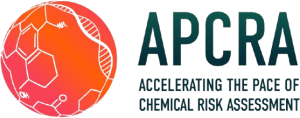Overall goal/objectives:
In 2018 the Government of Canada began researching the potential of the zebrafish (ZF) embryo and larva as whole organism models to 1) evaluate endocrine disruption beyond developmental effects and 2) as an alternative to the 28-day rodent assay for general toxicity assessments, thereby facilitating the 3Rs of reduction, refinement and replacement of animals in toxicity testing. Key to this research are 1) incorporation of behavioural and transcriptomic platforms as early biomarkers of toxicity and 2) international collaboration to validate the ZF model as a globally harmonized regulatory tool for chemical risk assessment. Using NRC Canada ZF toxicity tests, the zebrafish embryo toxicity (ZET) assay and the general and behavioural toxicity (GBT) assay, 3 replicates of 12 embryos/concentration were exposed statically for 6-120 hpf in the ZET and for 72-120 hpf in the GBT. Single larvae (GBT) or chorionated embryos (ZET) were treated in individual wells. Selection of 7 concentrations/test compound was based on the MTC determined in dose range finding tests. Phenotypic toxicity (EC20) was profiled using 20 markers (e.g., hatching, heart beat) at 72 and 120 hpf in the ZET and 96 and 120 hpf in the GBT. Behaviour was evaluated for distance travelled and startle response at 120 hpf. Larval tissue was collected for RNA sequencing to determine differential gene expression. In collaboration with the NTP (SEAZIT initiative), 20 test compounds (Aldicarb, Amoxicillin, Benzophenone, Bisphenol A, Bisphenol S, Dechlorane Plus, 3,4-Dichloroaniline, Raloxifene HCl, Pyriproxifen, Pyrene, Propofol, Permethrin, Resorcinol, Tetrabromobisphenol A, Testosterone Propionate, Thiobendazole, Tricresyl Phosphate, Triphenyl Phosphate, Tris(dichloro-isopropyl) phosphate, Valproic Acid) were selected. The EC20 for the most prominent phenotype observed varied with substance, and between assay (ZET, GBT) and time points. The behavioural response varied with substance. Substance-specific differential expression of gene subsets within dose ranges of EC20 x 10-4-100.7 varied with substance and included endocrine-related genes. Results suggest substance-specific mechanisms of action and life-stage specific sensitivity that support the utility of zebrafish models with behavioural and transcriptomic markers for predicting endocrine disruption and general toxicity as potentially more sensitive than rodent assays.
Case Study Leader:
Health Canada (Joëlle Pinsonnault Cooper, Jean Grundy, Lee Ellis)
Collaborators:
Health Canada
Status: Completed
Presentations or publications that have been publicly released:
Achenbach JC, Leggiadro C, Sperker SA, Woodland C, Ellis LD. Comparison of the Zebrafish Embryo Toxicity Assay and the General and Behavioral Embryo Toxicity Assay as New Approach Methods for Chemical Screening. Toxics. 2020 Dec 21;8(4):126. doi: 10.3390/toxics8040126. PMID: 33371320; PMCID: PMC7767334. https://pubmed.ncbi.nlm.nih.gov/33371320/


